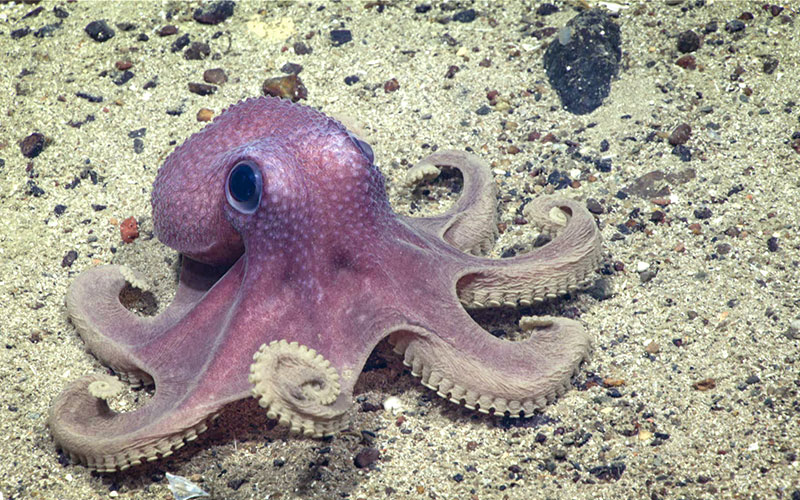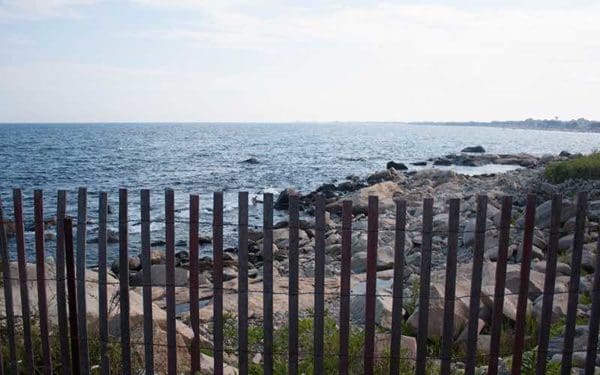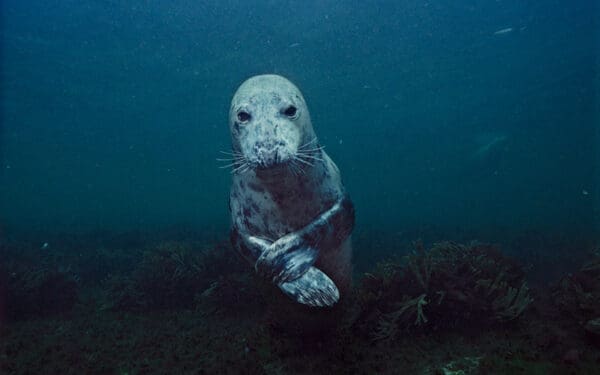
A wide diversity of marine life is protected within the Northeast Canyons and Semounts Marine National Monument, like this octopus on Bear Seamount. Photo: NOAA Office of Ocean Exploration and Research, Deep Connections 2019
Three years ago, President Obama designated the first and only marine national monument in the U.S. Atlantic Ocean: the Northeast Canyons and Seamounts. The monument encompasses nearly 5,000 square miles of New England’s ocean, including three spectacular deep-sea canyons and four ancient volcanos known as seamounts. It protects an incomparable array of marine life including endangered whales, sea turtles, seabirds, fish and more than 75 species of deep-sea corals. Sperm whales, green sea turtles, Atlantic puffins, giant manta rays, and many other rare and at-risk species also call the monument home.
Now, as the Canyons and Seamounts turns three, we’re celebrating the critical role it plays in safeguarding the health of New England’s ocean for generations to come – and highlighting the need for more places like it in our ocean.
Protected Areas Help Our Ocean Under Stress
Humans impact nearly every part of New England’s ocean. From commercial fishing to cargo shipping, demand on our ocean and its resources is increasing. But within the boundaries of the Canyons and Seamounts, destructive activities like oil and gas drilling and nearly all commercial fishing are prohibited.
Free from these threats, the monument’s vibrant ecosystem is preserved, and the wide diversity of marine life within it can thrive. But one small monument in New England’s ocean is not enough. To ensure the entire ocean’s long-term health, we need more protected spaces like this.
Our changing climate makes it even more urgent to set aside ocean places. The ocean absorbs more heat and climate-damaging emissions than anywhere else on the planet. As a result, it is undergoing rapid ecological change, increasing stress on underwater life. In New England, the Gulf of Maine is warming faster than nearly every other part of the ocean worldwide. And New England’s ocean ecosystem is already feeling the effects: Atlantic cod, lobster, and other species are migrating to find cooler waters. North Atlantic right whales are traveling farther to find food.
As these changes happen, protected places like marine national monuments create refuge areas for marine life and help build resilience in a changing ocean ecosystem. They also serve as living laboratories for scientists studying these changes. Just this month, NOAA’s Okeanos Explorer dove into the monument and explored its deep-sea habitats. The data from the dive will help us better understand the corals, sponges, and other creatures living on the seafloor — which will give us the tools to better protect our ocean as we continue to fight back against the climate crisis.
The Northeast Canyons and Seamounts Should be One of Many Underwater Monuments
While we celebrate the Canyons and Seamounts, we still need a comprehensive approach to protecting the ocean in New England. A recent United Nations report revealed startling new information about the massive decline in biodiversity: up to one million species could face extinction within decades, including more than a third of marine mammals and sharks.
In the wake of this dire prediction, scientists around the world are calling for massive protection of the planet – both land and ocean. By putting aside 30-50 percent of land and water worldwide, they say, we have a chance of averting the extinction crisis.
Here in New England, that means thinking strategically and proactively about permanently protecting areas of our ocean beyond the Northeast Canyons and Seamounts. We must look especially at those areas that are most vulnerable to overfishing, industrial exploration, and climate change – places, like Cashes Ledge, that are irreplaceable.
The Northeast Canyons and Seamounts Marine National Monument is a special place to celebrate today – and it should be an anchor for a network of protected areas in New England in the future.
You can learn more about the NOAA Okeanos Explorer’s Deep Connections dive into the Northeast Canyons and Seamounts on NOAA’s website.



